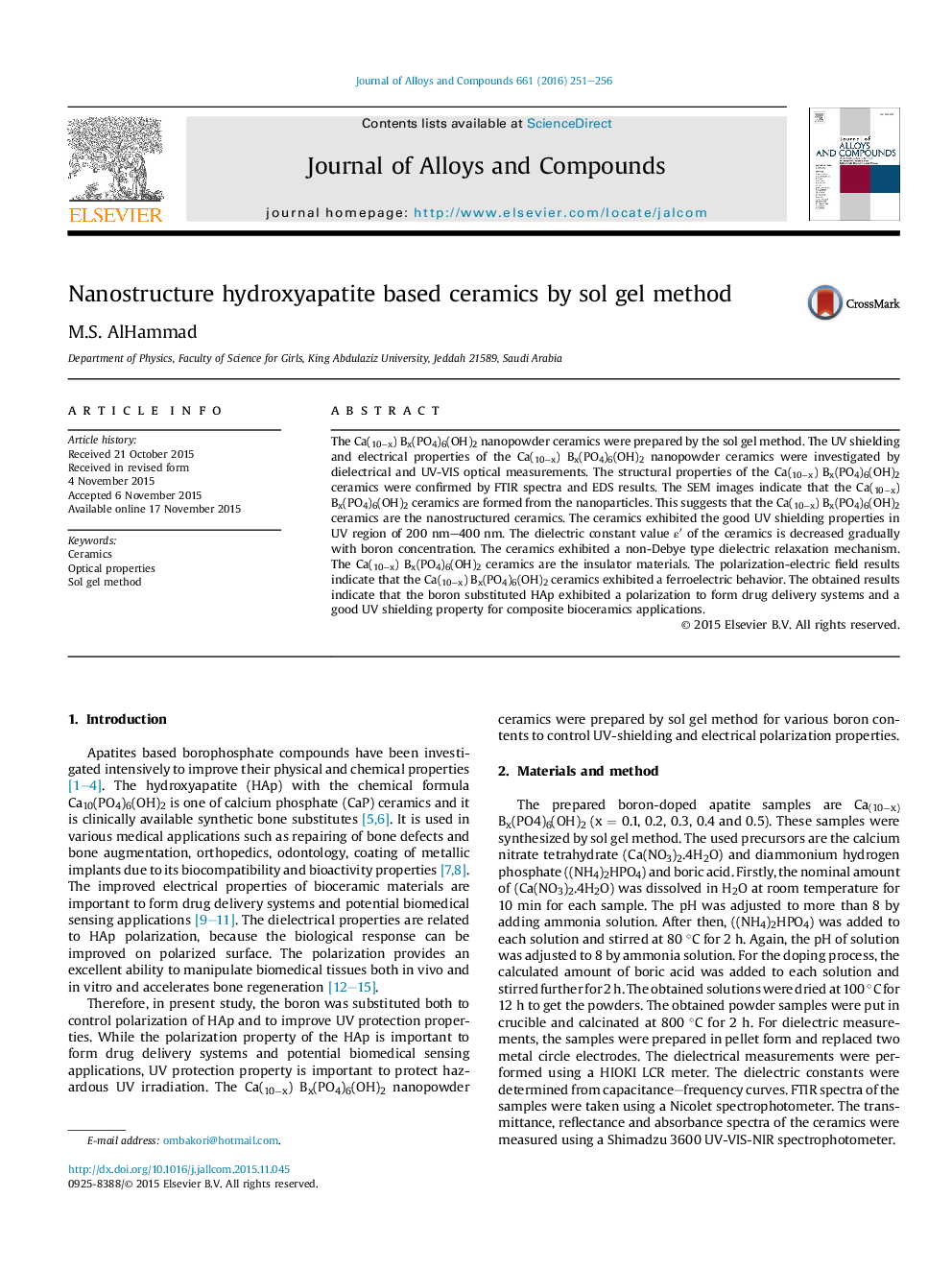| Article ID | Journal | Published Year | Pages | File Type |
|---|---|---|---|---|
| 1607046 | Journal of Alloys and Compounds | 2016 | 6 Pages |
•The Ca(10−x) Bx(PO4)6(OH)2 nanopowder ceramics were prepared by sol gel method.•Ca(10−x) Bx(PO4)6(OH)2 ceramics are nanomaterials.•The Ca(10−x) Bx(PO4)6(OH)2 ceramics are bioceramic materials.
The Ca(10−x) Bx(PO4)6(OH)2 nanopowder ceramics were prepared by the sol gel method. The UV shielding and electrical properties of the Ca(10−x) Bx(PO4)6(OH)2 nanopowder ceramics were investigated by dielectrical and UV-VIS optical measurements. The structural properties of the Ca(10−x) Bx(PO4)6(OH)2 ceramics were confirmed by FTIR spectra and EDS results. The SEM images indicate that the Ca(10−x) Bx(PO4)6(OH)2 ceramics are formed from the nanoparticles. This suggests that the Ca(10−x) Bx(PO4)6(OH)2 ceramics are the nanostructured ceramics. The ceramics exhibited the good UV shielding properties in UV region of 200 nm–400 nm. The dielectric constant value ε′ of the ceramics is decreased gradually with boron concentration. The ceramics exhibited a non-Debye type dielectric relaxation mechanism. The Ca(10−x) Bx(PO4)6(OH)2 ceramics are the insulator materials. The polarization-electric field results indicate that the Ca(10−x) Bx(PO4)6(OH)2 ceramics exhibited a ferroelectric behavior. The obtained results indicate that the boron substituted HAp exhibited a polarization to form drug delivery systems and a good UV shielding property for composite bioceramics applications.
Graphical abstractFigure optionsDownload full-size imageDownload as PowerPoint slide
